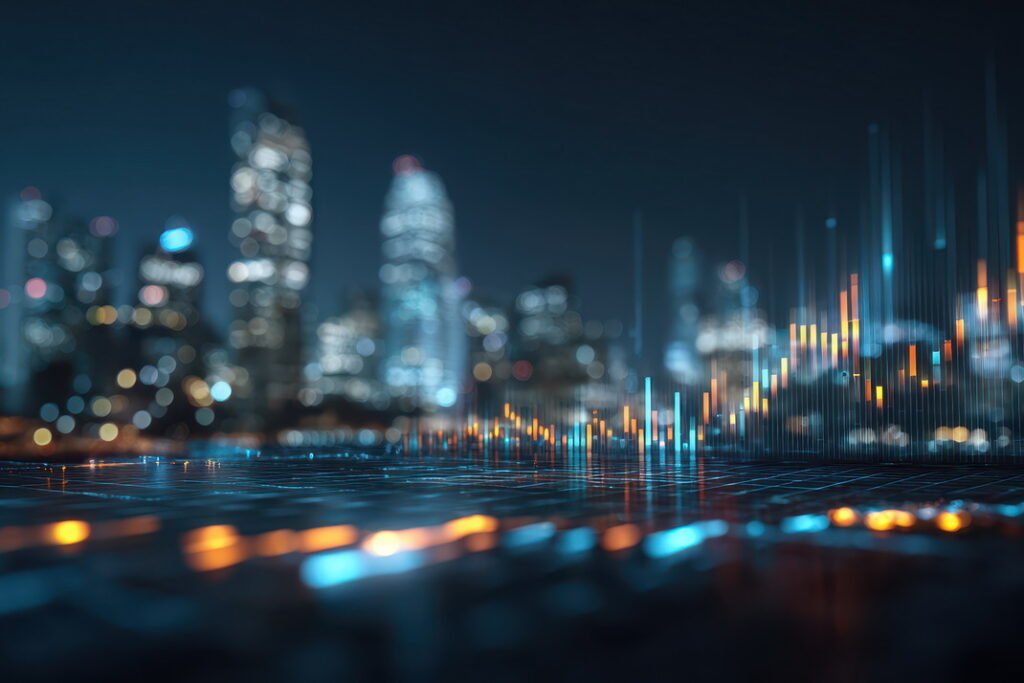Picture yourself strolling along a street where the lights know when to lower their brightness, traffic lights modify their timings according to current traffic, and parking spaces notify your phone. This is a scene taking place right now in urban areas throughout America.
The Tech Revolution Hits Main Street
Our urban areas are receiving a significant enhancement. Sensors embedded in sidewalks tally foot traffic. Cameras study traffic trends while respecting privacy rights. Air quality sensors provide urban developers with real-time data. These unseen assistants continuously operate. They collect massive data, which subtly improves the urban experience.
Think of it as a nervous system for a city, allowing it to feel and respond. Each street corner acts as a sensory point that transmits information to a digital mind. This brain analyzes all the information and rapidly reaches conclusions. Should we prolong the green light for an additional ten seconds? Is that park in need of increased security patrol this evening? Which areas require improved internet connectivity?
Making Sense of the Numbers
Information moves through urban systems like water travels through tubes. Traffic agencies monitor which paths become congested during peak hours. Transit authorities track the bus stops that experience the highest number of passengers. Park services are aware of which playgrounds require maintenance before the equipment fails.
However, raw figures have no significance without intelligent assessment. City officials use advanced software designed to detect patterns that people may overlook. Perhaps crime decreases in regions with improved street lighting. Maybe people tend to use public transport more when the weather turns bad. These insights assist mayors and city councils in making improved decisions regarding the allocation of taxpayer funds.
The true magic occurs when various departments exchange their insights. Fire engines receive quicker paths to urgent situations. School buses steer clear of construction areas on their own. Emergency shelters are available before extreme weather approaches.
Citizens in the Driver’s Seat
Contemporary city planning prioritizes the needs of residents in all decisions. Mobile applications enable users to report potholes immediately. Internet surveys collect opinions regarding new cycling paths. Virtual town halls deliver community gatherings straight to your home.
Several cities have developed digital dashboards displaying real-time data on various topics, including water consumption and crime figures. Residents can observe precisely how their tax funds are utilized. This openness cultivates trust among citizens and the government.
Social media significantly influences the situation. City managers oversee platforms for grievances, recommendations, and developing issues. When a water main breaks, they become aware almost immediately as residents share images and information quicker than conventional news outlets.
The Road Ahead
Smart cities are merely the start of this evolution. The experts at Blues IoT say that future cities will anticipate issues before they arise. Artificial intelligence will enhance everything from waste collection paths to energy allocation throughout entire urban regions.
The greatest obstacle isn’t technical, it’s human. Urban areas need to reconcile effectiveness with confidentiality. They must provide equal service to all, not only to residents who are tech-savvy. Digital tools ought to enhance human judgment rather than completely substitute it.
Conclusion
The future of city life merges advanced technology with traditional community principles. Each data point gathered has a single aim. This aim is to enhance the lives of those who reside in these areas. Cities that adopt this digital transformation foster more livable, sustainable, and responsive communities. They prevent traffic jams from developing. They stop crime rather than merely reacting to it. They provide services in a more efficient manner while reducing costs. The roads might appear identical. Beneath them though lies a complex system that is perpetually learning, evolving, and enhancing.

